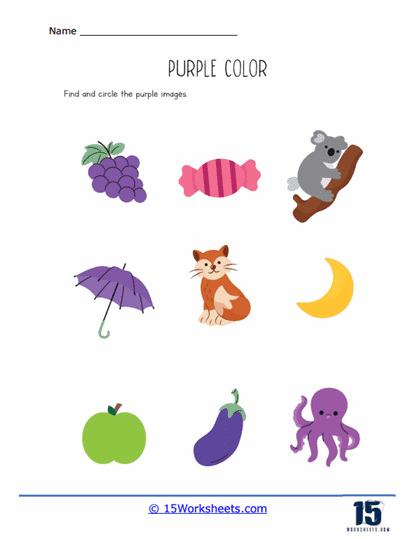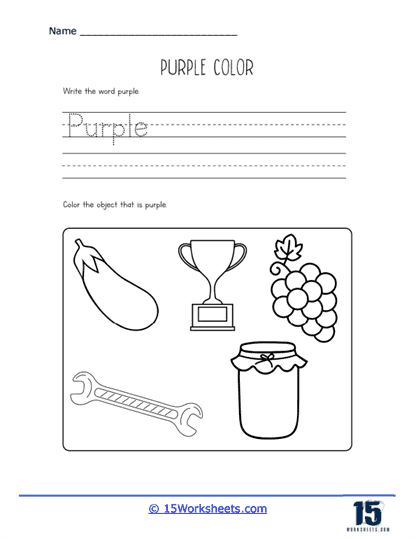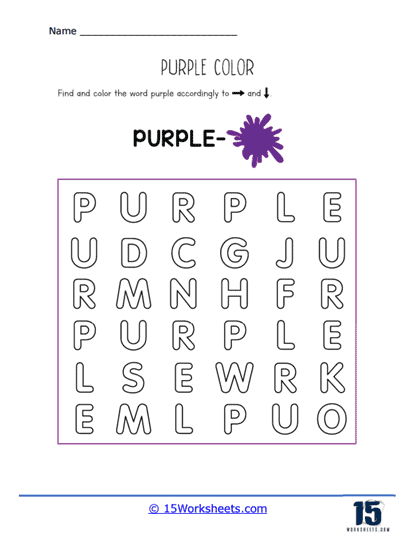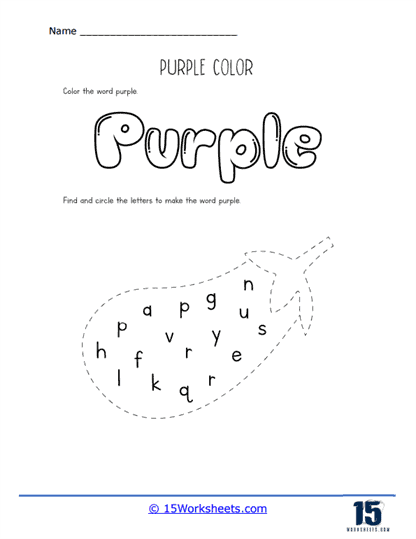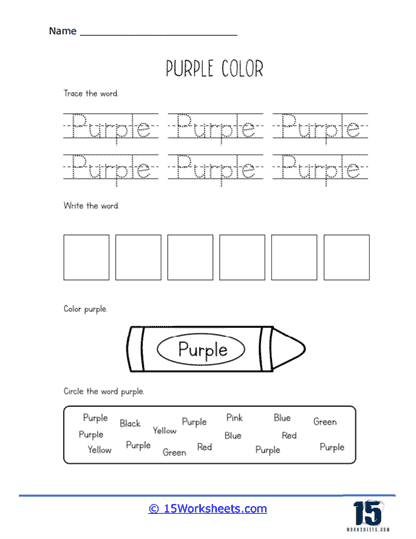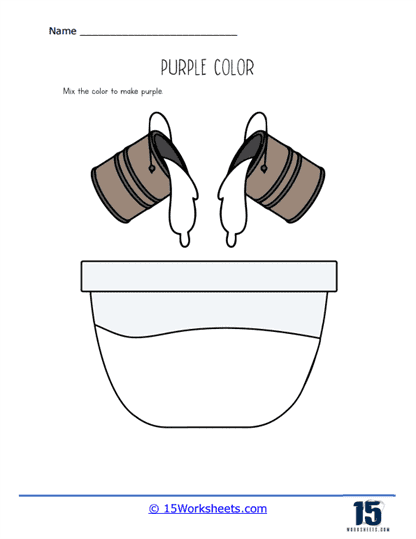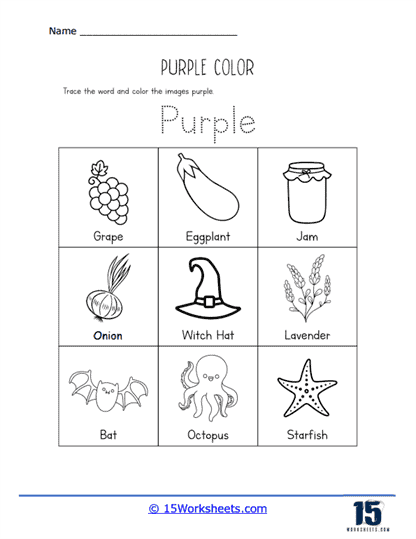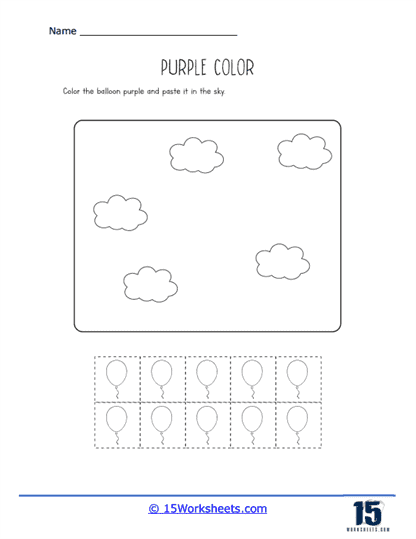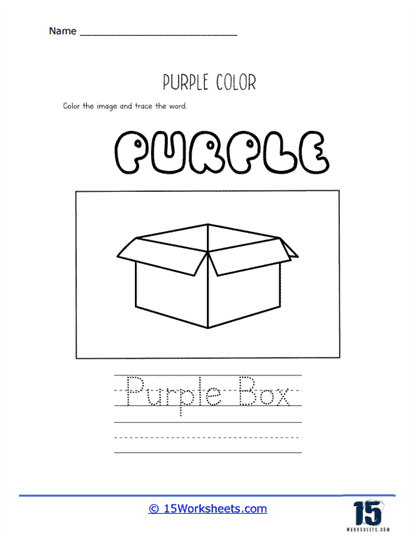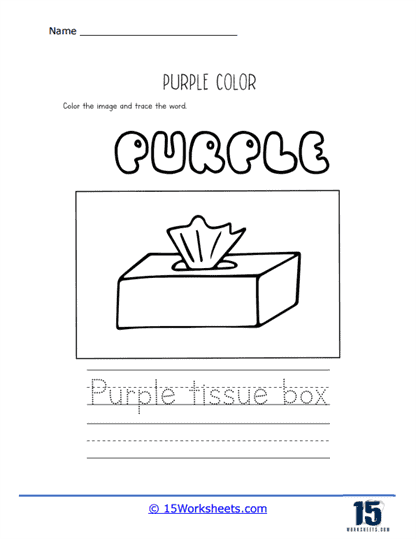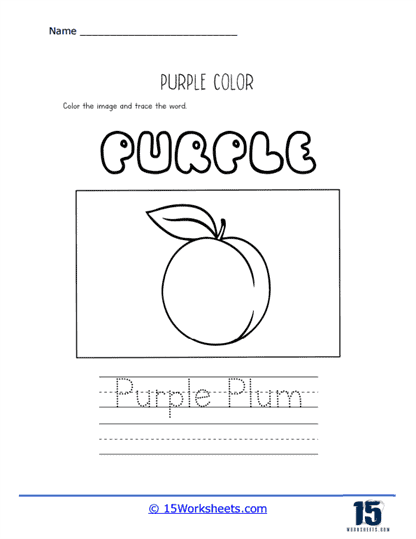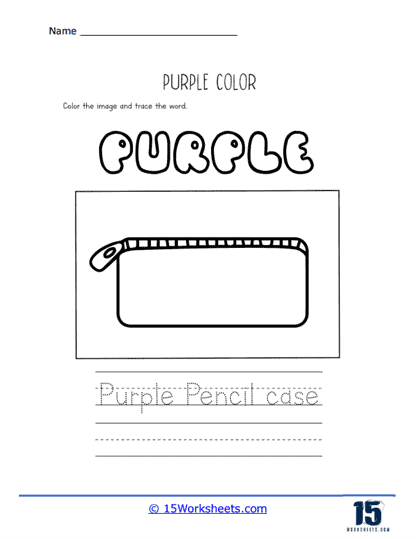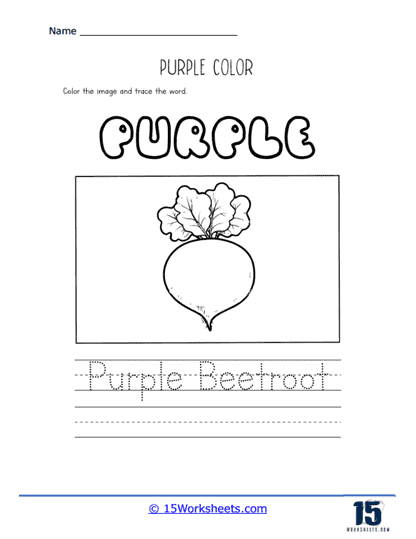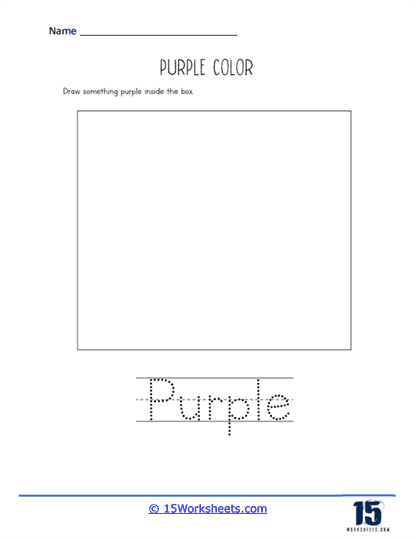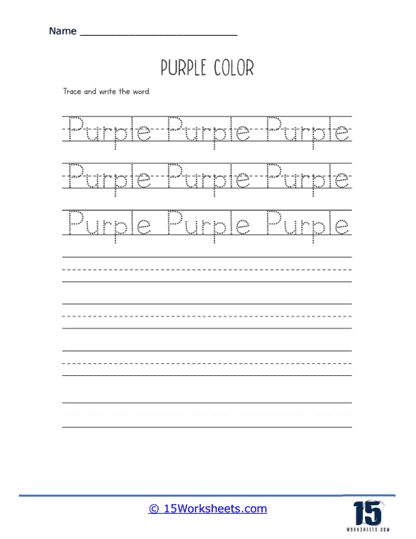Purple Worksheets
All About These 15 Worksheets
Immerse your young learners in the majestic world of the color purple with this thoughtfully curated series of Kindergarten worksheets. Tailored to capture the curiosity of early learners, this collection serves as both an introduction to colors and a deep dive into the captivating realm of purple. Designed to be engaging and hands-on, these worksheets go beyond mere identification—they invite students to explore, create, and think critically, building a foundation for future learning.
Through interactive exercises, children will not only become familiar with the color purple but also develop essential skills that will benefit their cognitive and creative growth. Each worksheet is crafted to promote color recognition, enhance vocabulary, and foster hands-on learning, encouraging young minds to explore and express themselves in a playful, imaginative way. The focus on purple becomes a gateway for developing broader visual discrimination skills and the ability to categorize and relate objects based on color.
By engaging in activities such as identifying and coloring objects that are purple, students solidify their understanding of the color while practicing visual differentiation. These exercises help children distinguish between different shades and tones, sharpening their ability to observe and process visual information—skills that are critical in early education. As they associate objects like grapes, amethysts, or even fictional items like purple dragons, their vocabulary grows, making connections between words, colors, and the world around them.
The worksheets incorporate tracing and writing exercises centered around the color word “purple.” This promotes not only fine motor skills but also early literacy as children practice forming letters and recognizing the color’s name. These seemingly simple activities have a profound impact, boosting letter formation, word recognition, and the confidence to write independently. It’s a small step that sets the stage for a larger journey into reading and writing.
The exploration of objects and symbols commonly associated with the color purple further enriches the learning experience. From regal imagery of crowns to the mystery of a twilight sky, the worksheets help students build connections to culture, nature, and their environment. Through this, children deepen their understanding of the symbolism and emotional resonance of the color purple, nurturing both their cognitive and creative sides.
This collection is more than just a set of worksheets; it’s a multisensory learning experience. Each task is designed to provide opportunities for hands-on exploration, allowing children to solve problems and make decisions. Whether tracing the letters in “purple,” identifying a purple flower, or coloring their own purple butterfly, students are actively engaging their fine motor skills, which are critical for both writing and artistic expression. These experiences also foster a love for learning and self-expression through color.
Through the structured yet creative approach of these worksheets, students will discover that learning about colors can be both fun and intellectually stimulating. They will build confidence as they successfully complete each activity, further encouraging a love for colors and creativity. By focusing on purple-a color often associated with royalty, wisdom, and imagination-students will gain a deeper appreciation for the beauty and complexity of the world around them.
This series of purple-themed worksheets serves as a stepping stone toward a lifelong journey of artistic exploration. By laying the foundation for color recognition and self-expression, these exercises nurture a child’s budding appreciation for art, creativity, and the vibrant world of colors. Through this journey with purple, young learners are not only developing essential academic skills but also cultivating a sense of wonder and curiosity that will fuel their passion for learning long after they’ve completed these worksheets.
All About the Color Purple
Purple is a color that captivates and fascinates. Nestled between the bold red and the calming blue on the visible spectrum, purple embodies a unique combination of warmth and coolness, giving it an extraordinary versatility that is rarely matched by other colors. However, purple is much more than just a blend of two primary colors. It holds a rich history, deep symbolism, and an undeniable presence in the world of art, culture, and nature. What makes purple stand out is not just its beauty, but the powerful stories and emotions it evokes.
One of the reasons purple has always held a special place in human imagination is its rarity in nature. Compared to other colors, purple is seldom seen in the natural world. While there are beautiful examples of purple flowers like irises, violets, and lavender, as well as fruits like plums and grapes, they are far less common than, say, green foliage or blue skies. This scarcity has made purple all the more desirable, lending it an aura of mystique and fascination. It’s a color that feels both exclusive and otherworldly. Even in the animal kingdom, the color purple is uncommon-species like the purple emperor butterfly and certain types of jellyfish stand out precisely because they are rare. The rarity of purple in nature has only added to its enduring allure over centuries.
Historically, the color purple has been synonymous with wealth, power, and prestige. This association dates back to ancient times when producing purple dye was an expensive and labor-intensive process. The most famous purple dye, known as Tyrian purple, was derived from the secretions of the murex sea snail. This dye was so costly and difficult to produce that it became a symbol of luxury and was reserved exclusively for royalty, nobility, and religious figures in civilizations like Rome, Greece, and Phoenicia. In fact, Roman emperors would wear purple robes to signify their divine right to rule. The scarcity of this dye, coupled with its deep, rich hue, made purple a color that represented not just wealth but a kind of sacred authority. Even today, the color purple maintains its regal connotations, symbolizing sophistication and elegance in various cultures worldwide.
Beyond its historical significance, purple also holds profound symbolic meaning in many cultures and spiritual practices. In color psychology, purple is often linked to creativity, imagination, and introspection. It is a color that encourages contemplation and meditation, making it a favorite in spaces designed for reflection and spiritual growth. In certain spiritual traditions, purple is associated with the highest chakra-the crown chakra-located at the top of the head. This chakra represents enlightenment, self-realization, and the connection to higher consciousness or the divine. Because of these associations, purple often evokes a sense of mystery, magic, and spiritual depth. It is a color that invites us to explore the unknown, to dream, and to seek higher truths.
From an artistic and design perspective, purple’s role as a secondary color gives it a unique position in color theory. Unlike other secondary colors, which are created by mixing two warm or two cool primary colors, purple is formed by blending red-a warm color-with blue-a cool color. This duality allows purple to embody both the fiery energy of red and the tranquil calm of blue. As a result, purple can be both bold and soothing, depending on its shade and context. This balance makes it an incredibly versatile color in design, fashion, and art, where it can be used to convey a wide range of emotions and themes, from passion and creativity to serenity and introspection.
In color theory, purple’s complementary color is yellow, a pairing that creates striking visual contrast. The combination of purple and yellow is often used in art and design to create a sense of balance and harmony, as the two colors intensify each other’s vibrancy. This contrast is not only eye-catching but also deeply symbolic-purple, with its associations with royalty and luxury, paired with yellow, often linked to joy and energy, creates a rich, dynamic interplay that can evoke both opulence and optimism.
Perhaps one of purple’s most fascinating characteristics is its variety of shades and tones. From deep, dramatic hues like eggplant, indigo, and plum, to soft, soothing shades like lavender, lilac, and mauve, purple encompasses a wide emotional spectrum. Darker shades of purple are often associated with mystery, luxury, and sophistication, while lighter shades evoke a sense of calm, femininity, and innocence. This range of hues gives purple a unique flexibility in design and fashion. A deep royal purple can add drama and elegance to a space, while soft lavender can create a peaceful, restful atmosphere. Few colors possess the ability to span such a wide emotional and visual range.

